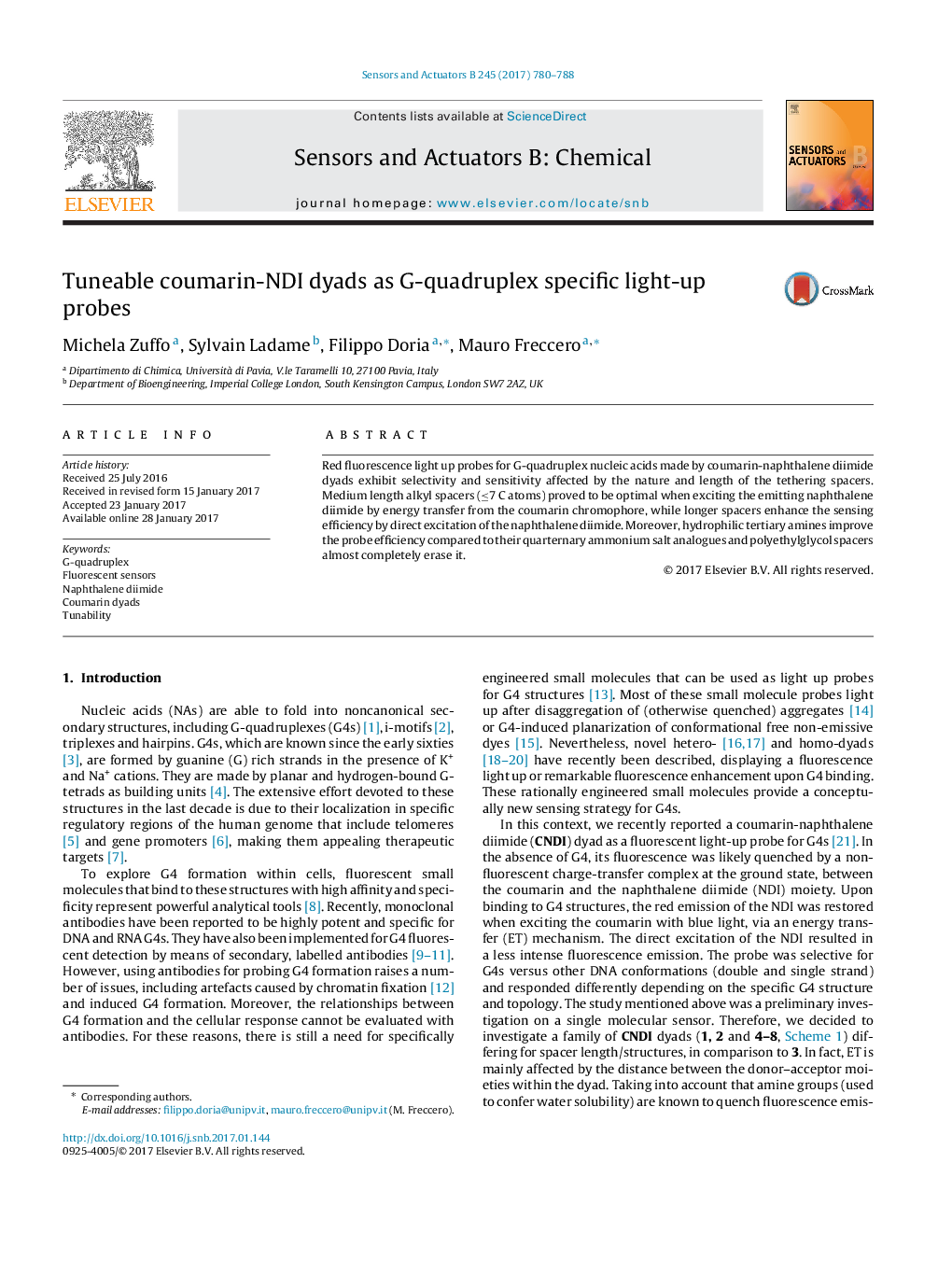| Article ID | Journal | Published Year | Pages | File Type |
|---|---|---|---|---|
| 5009946 | Sensors and Actuators B: Chemical | 2017 | 9 Pages |
â¢Engineering high-affinity G-quadruplex nucleic acid ligands with “turn on” photoluminescence.â¢Red emitting coumarin-naphthalene diimide dyads exhibiting selective sensing toward different G-quadruplexes.â¢Selectivity and Sensitivity Tuning by structural features of the tethering spacers.â¢Medium length alkyl vs Polyethylenglycol spacers: the simplest choice with the best probe performance.
Red fluorescence light up probes for G-quadruplex nucleic acids made by coumarin-naphthalene diimide dyads exhibit selectivity and sensitivity affected by the nature and length of the tethering spacers. Medium length alkyl spacers (â¤7 C atoms) proved to be optimal when exciting the emitting naphthalene diimide by energy transfer from the coumarin chromophore, while longer spacers enhance the sensing efficiency by direct excitation of the naphthalene diimide. Moreover, hydrophilic tertiary amines improve the probe efficiency compared to their quarternary ammonium salt analogues and polyethylglycol spacers almost completely erase it.
Graphical abstractCoumarin-naphthalene diimide dyads act as selective and sensitive fluorescence light up probes for G-quadruplex nucleic acids. Their response is remarkably affected by the nature and length of the tethering spacers.Download high-res image (92KB)Download full-size image
